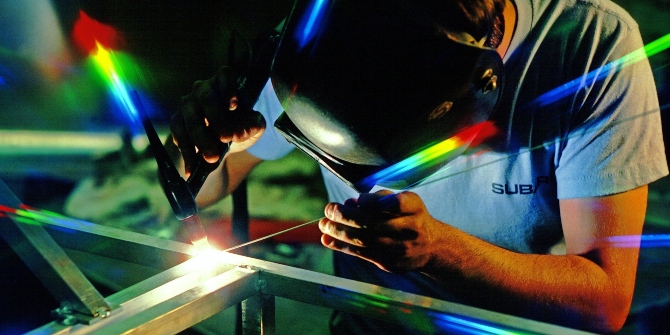
Randall Goodden’s business is advising companies on how to survive product liability lawsuits and recalls. He thinks the recent rise in recalls is being driven by regulators in “overkill mode.” But he has blunt advice for businesses seeking to avert the financial and reputational losses that flow from a recall: take pains to avoid putting out a defective product in the first place.
“Every day [companies and regulators] announce recalls, five or six a day,” says Goodden, who heads an eponymous Milwaukee-based firm and has written three books on preventing product liability. “I read what’s wrong with the product—it could overheat and start a fire, or the circuit board could short out, or the product could break down. My first question [to the manufacturer] is: ‘Why didn’t you know that?’ ”
Companies facing the unwelcome surprise of a recall probably didn’t test the product sufficiently before launch, Goodden tells freelance journalist Sharon O’Malley in her recent report for SAGE Business Researcher. He is among a growing number of consultants, lawyers—and, yes, regulators—who are counseling manufacturers that rigorous pre-release testing and tweaking are ultimately better for their balance sheets, to say nothing of the health and safety of their customers, than trying to redress problems afterward.
Goodden’s message should have a wide audience, because recalls of dangerous, defective or deceptive products are growing, in the United States and around the world. And as the recalls mount, so do the stakes for businesses, as social media platforms and high-tech devices make it ever easier for consumers to vent about poor products. Companies can rise or fall based on how they navigate these dangerous currents.
Take the case of Takata, the Japanese auto airbag maker. Its product contained a propellant made with ammonium nitrate—the same chemical used in the Oklahoma City federal building bomb—that when coupled with high temperatures and moisture caused the airbags to rupture and spew metal fragments like shrapnel. The statistics tell the unlovely tale: 10 people dead since 2009, 28.8 million airbags already recalled and another 35 million to 40 million ordered by regulators, a $200 million civil penalty imposed by the U.S. National Highway Traffic Safety Administration (NHTSA).
Due in part to the airbag problem, auto recalls in the United States set a record in 2015 for the second year in a row, according to NHTSA. And the automakers are hardly alone. In the U.S., recalls of pharmaceuticals, food products, and consumer goods other than autos and food have all trended upward in recent years, according to the relevant federal agencies. In Europe, the number of safety notifications and recalls of dangerous non-food products has risen steadily every year except one since 2003, according the European Union’s Rapid Alert System.
O’Malley writes that a complex interplay of factors is causing this trend:
Both government regulators and consumers are getting tougher on manufacturers selling products that kill, harm or jeopardize users.
The internet, cellphones and social media have made it easier to report a malfunctioning device or a misprinted product label to the government and to disseminate that complaint to a massive audience.
Imports are increasing of products and components from countries where safety standards are less rigorous than those in the United States, making an already complex supply chain even more cumbersome to manage.
The greater U.S. government scrutiny is in part a reaction to a rolling scandal over dangerously defective imports from China that began in 2007. It eventually encompassed lead-tainted toy trains, chemically contaminated baby formula and pet food, fire-prone coffee makers and defective drywall, among other products. Congress responded in 2008 and again in 2011 by enacting legislation strengthening the powers of regulators, and they have followed suit.
“We’re seeing the government is being more aggressive, more diligent,” regulatory compliance lawyer Katherine Ann Cahill, president of Cahill Consultants in New York, told SAGE Business Researcher. “They’re conducting more robust investigations, and they’re bringing the C-suite into those investigations a lot sooner than they had before.”
And there’s reason to believe that some companies are taking to heart Goodden’s advice to test first, market later. One of the things driving the rise in recalls is the fact that manufacturers have increased their in-house testing of products and are being more diligent about complying with government rules for self-disclosure of health and safety threats, says Jonathan Bernstein, president of Bernstein Crisis Management.
“Companies are more aware that if they get caught, their legal and reputational risk is much higher than it might have been in the past,” says Bernstein, whose California-based firm advises companies facing reputational threats.
♣♣♣
Notes:
- This article is based on the report, Product Recalls, SAGE Business Researcher, by Sharon O’Malley.
- The post gives the views of its authors, not the position of LSE Business Review or the London School of Economics.
- Featured image credit: Simon Yeo CC-BY-2.0
- Before commenting, please read our Comment Policy
 Ken Fireman is managing editor for SAGE Business Researcher, which delivers deep dives on contemporary business issues to students and faculty twice a month. He was previously a senior editor for economics and politics at Bloomberg News and a White House correspondent, national political reporter and Moscow bureau chief for Newsday. @kfireman1
Ken Fireman is managing editor for SAGE Business Researcher, which delivers deep dives on contemporary business issues to students and faculty twice a month. He was previously a senior editor for economics and politics at Bloomberg News and a White House correspondent, national political reporter and Moscow bureau chief for Newsday. @kfireman1






Hello Ken
Thank you for your article. I hope manufacturing CEOs throughout the U.S., UK, and EU begin to pay more attention to this problem and help reverse the ever-rising trends in recalls which in turn fuels the rise in product liability lawsuits. Fortunately, more and more manufacturers are pursuing in-house training seminars for their management teams, not only in the U.S. but even in Asia, but far more need to get onboard.
Thanks again,
Randall Goodden